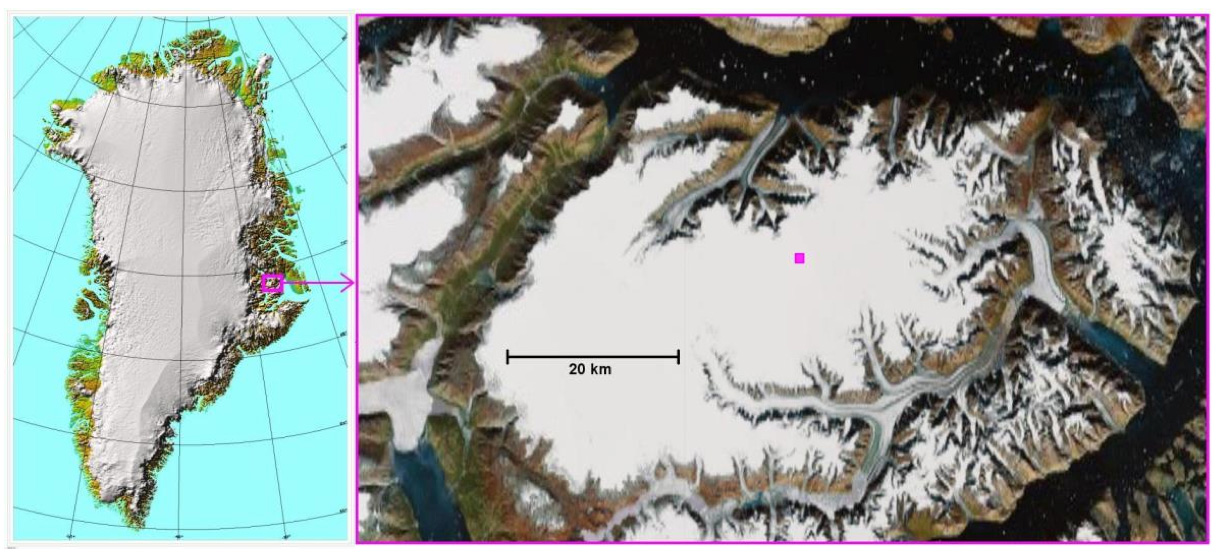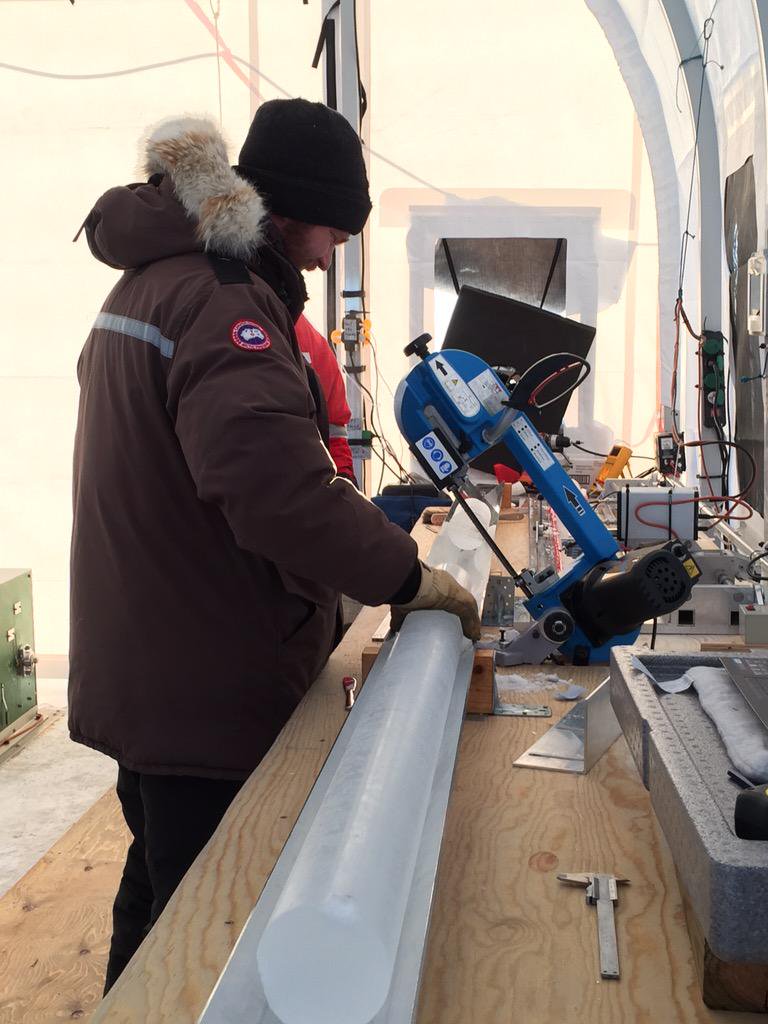
On June 12, 2015, an international research team led by the Niels Bohr Institute at the University of Copenhagen completed the drilling of a new ~100,000 year long ice core through the ice cap on the Renland peninsula in the Scoresbysund fjord in Eastern Greenland. The international project – called RECAP (REnland ice CAP project) – is a collaboration between scientists from Denmark's Centre for Ice and Climate at the University of Copenhagen, the U.S. (Penn State University and the University of Colorado), Germany's Alfred Wegener Institute (AWI), and Italy's University of Venice. The National Science Foundation's Division of Polar Programs funds the U.S. effort.

While a previous Danish ice core was drilled from the Renland ice cap in 1988, it was not drilled at the optimum location on the ice cap and bedrock was not reached. Furthermore, the drilling technology used in 1988 produced low quality ice core with a small diameter (3-inch), permitting neither gas measurements nor continuous chemical impurity measurements. The poor core quality of the 1988 ice core was caused by the drilling setup being unable to support drilling in liquid, and without a liquid in the borehole to equalize pressure, the core quality deteriorates with depth. In contrast, the new wet-drilled RECAP ice core contains high-quality, 4-inch diameter ice all the way to bedrock that is suitable for gas measurements and continuous chemical impurity measurements.

The Renland ice cap is constrained by the surrounding topography and its eastern plateau reaches an elevation of 2340 meters at its summit, where the thickness of the ice cap is almost 600 meters and the accumulation rate is approximately 0.5 meter of ice equivalent precipitation per year. The RECAP drill site was strategically located in the center of the Renland ice cap where the ice is the deepest and the most uniform with depth.
The shallowness of the Renland ice cap means that it does not have a brittle ice zone in the Holocene ice like the Greenland ice sheet, and therefore the RECAP ice core has the potential to yield the first continuous Holocene profiles of gases and chemical impurities ever extracted from Greenland. Furthermore, because climatic conditions on the Renland ice cap are strongly influenced by the varying Arctic sea ice export along Greenland's east coast, the RECAP ice core is expected to improve our understanding of Eastern Greenland climatic conditions, including the export of sea ice from the Arctic Ocean, over the past ~100,000 years.
In late April and early May 2015, a 4-person Danish field team determined the exact location of the RECAP drill site using a ground based radar system provided by CReSIS (Centre for Remote Sensing of Ice Sheets) at the University of Kansas, USA. The drilling equipment and ~11-person field crew were flown from Kangerlussuaq to Mestervig in Eastern Greenland via the U.S. 109th Air National Guard's ski-equipped LC-130 Hercules aircraft [see ABC news story – VIDEO: New York Air Guard Unit is Lifeline for Scientists in Greenland and Antarctica], and then from Mestervig to the RECAP drill site on Renland with the smaller AWI ski-equipped Basler DC-3 aircraft. Drilling of the RECAP ice core with the Danish Hans Tausen drill started on May 13, 2015, and was completed in record time one month later on June 12 at a depth of 584.11 meters when the drill reached the ground underneath the ice. The team then drilled down into the ground/sediment to get samples from below the ice.
The RECAP ice core was subsequently retrograded to AWI in Bremerhaven, Germany, where it was sub-sampled, with samples sent to laboratories at the Niels Bohr Institute, University of Venice, Penn State University, and the University of Colorado. U.S. efforts are focusing on gas concentrations and gas isotopes (PI Todd Sowers, Penn State University) and ice isotopes (PI James White, University of Colorado). Danish partners are also focusing on stable isotopes of ice and gas composition, as well as high-resolution chemistry. German partners are focusing on physical properties of the ice, line scanning, and dielectric properties to investigate the factors driving snow densification and ice core age model development.
For more information about RECAP, visit http://recap.nbi.ku.dk/
UC-Boulder Stable Isotope Lab manager Bruce Vaughn describes the international 2015 RECAP expedition to drill an ice core through the Renland Ice Cap, Greenland, in a video by student journalist Paul Mcdivitt. Bruce's conversation is punctuated by footage from the field, taken by clamping a GoPro camera to a drone, the wing of a plane, and the drill mount. Drone footage courtesy of Todd Sowers, Penn State.

